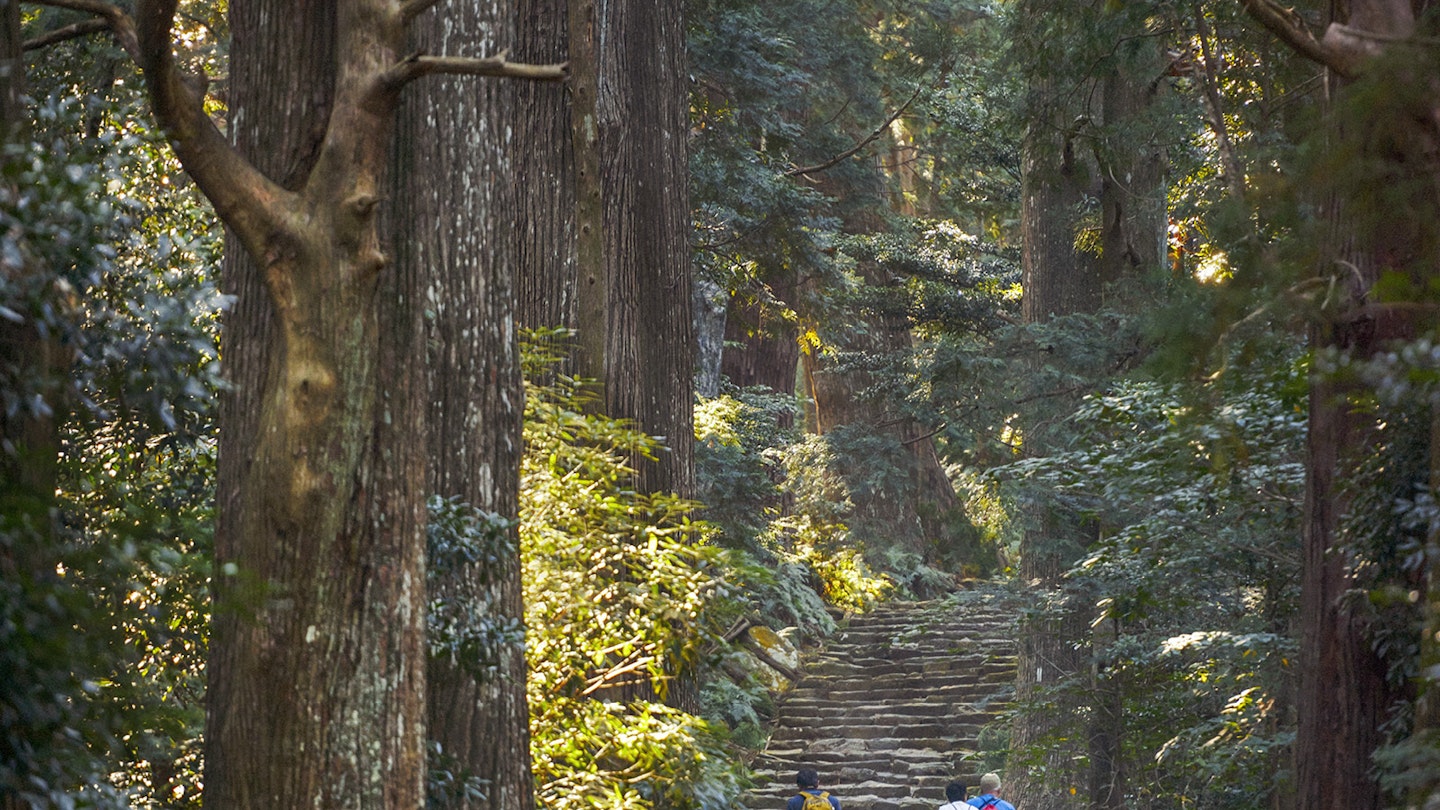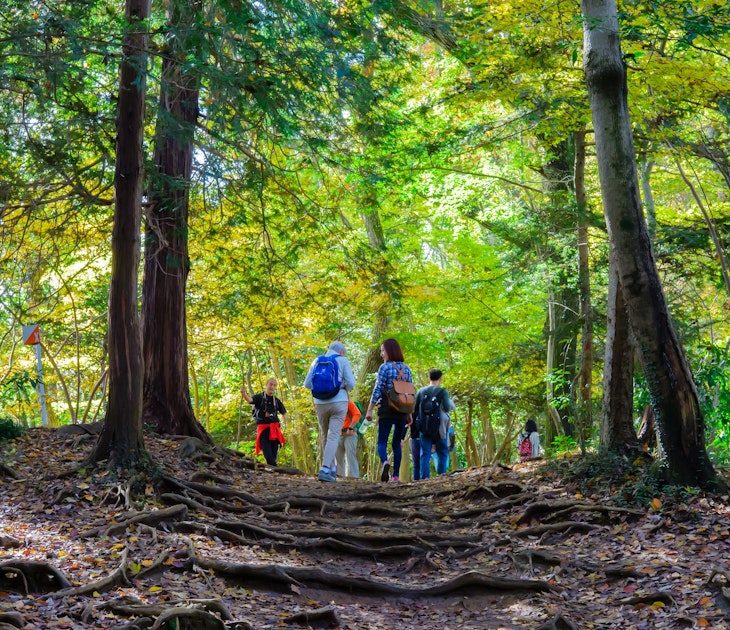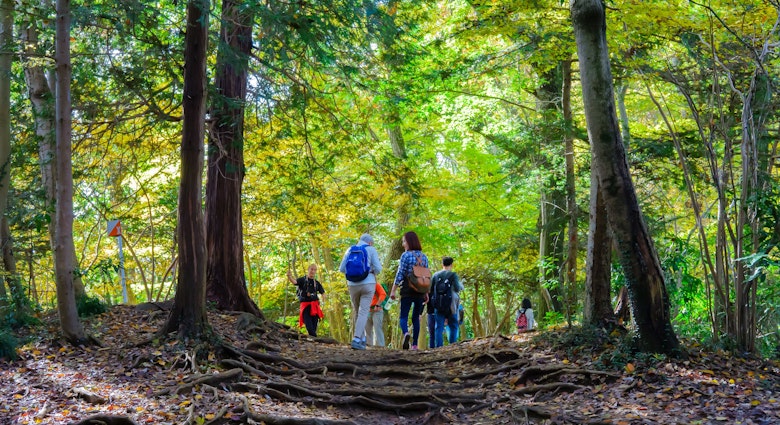Pilgrims have sought spiritual renewal on the sacred paths of Japan's Kii Peninsula for over a millennium. Walk in their footsteps along the Kumano Kodō.
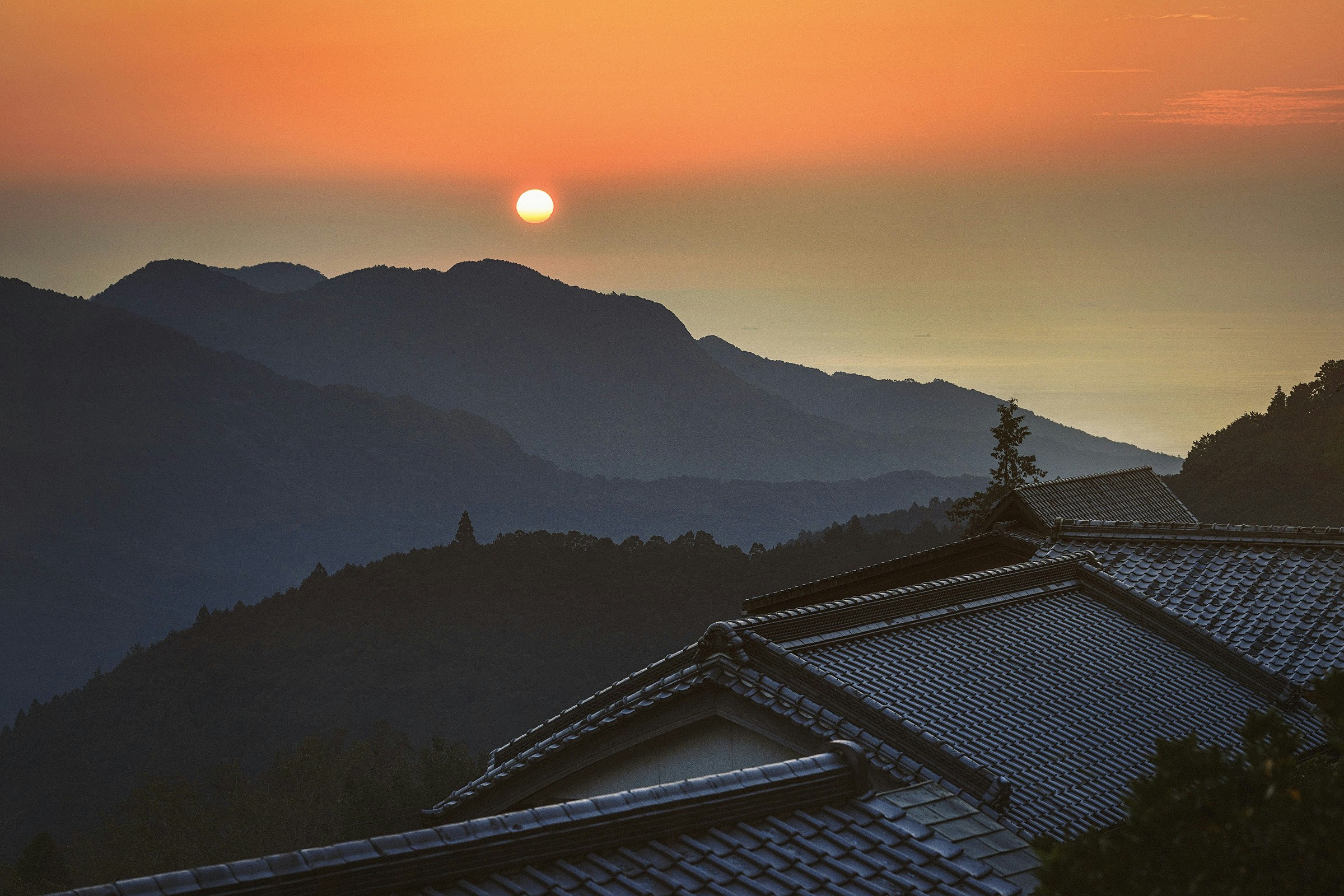
In the foothills of the Kii Peninsula, it’s raining – hard. Fat raindrops clatter through the trees, hitting the ground with a sound like marbles being dropped on slate. Rivulets of water tumble over the trail and a film of white cloud curls over the treetops, casting the forest in a gauzy, silver glow. The scent of damp earth hangs in the air. Ahead, a path tapers into the mist and three walkers trudge past giant cedars a hundred feet high. None of the hikers appear downtrodden by the rain; they seem positively cheery, chatting merrily as they tramp the leaf-strewn path, pointing out birds swooping and darting among the trees. Like all good pilgrims on the Kumano Kodō, they know that endurance and enlightenment are two experiences that often go hand in hand.
‘The Kumano Kodō was conceived as a test of mind, body and spirit,’ explains hiking guide Kennis Wong, a veteran of Japan’s most famous long-distance trail. ‘The difficulty, the isolation and the hardship were important parts of the pilgrimage. The belief was that by overcoming them, you purified yourself and improved your inner spirit.’ She jogs ahead to catch up with her group and a moment later the clouds split, sending white sunbeams rippling over the forest floor.
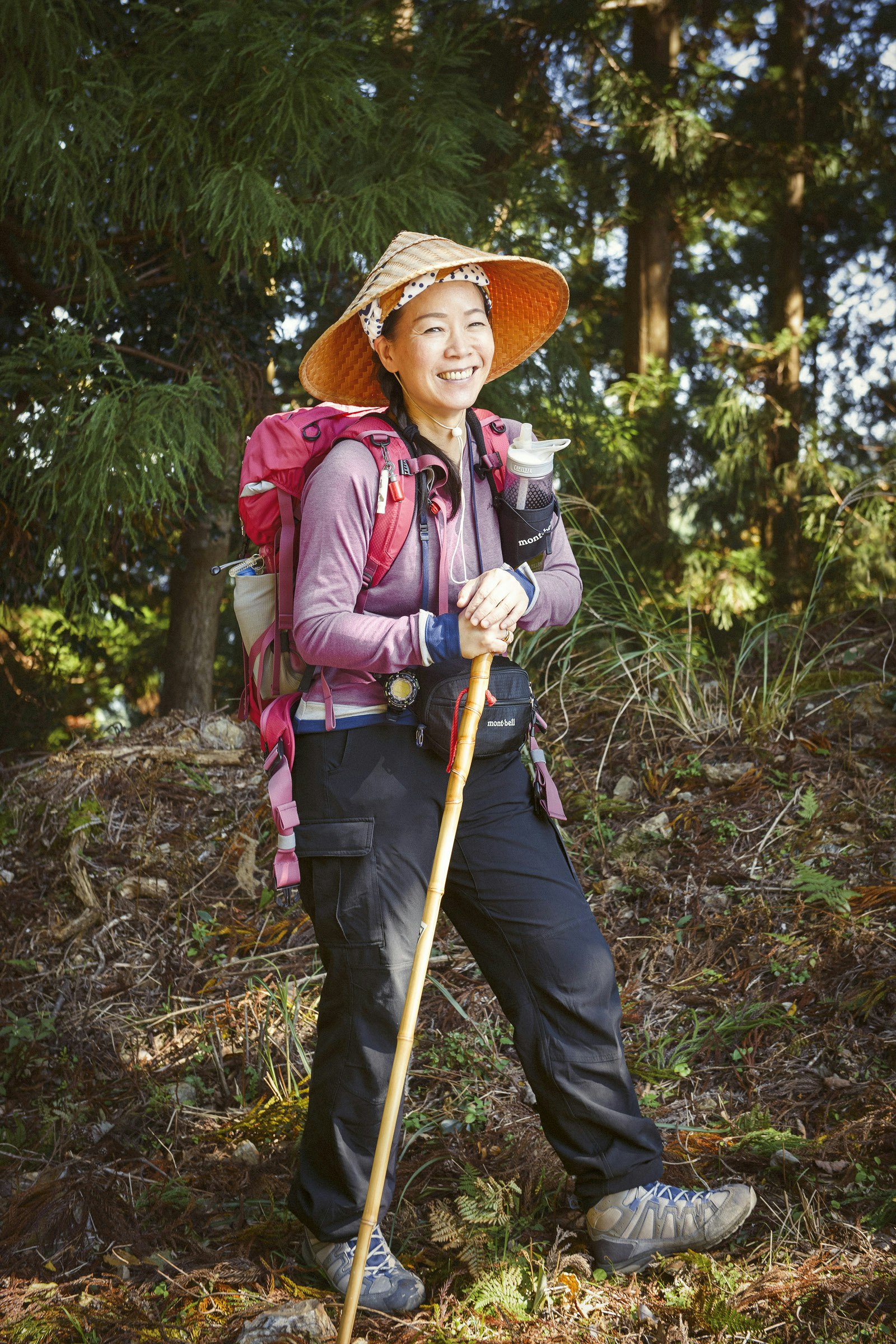
For 1,000 years, pilgrims have travelled to this corner of Japan in search of spiritual salvation. According to legend, the Kii Peninsula – now part of Wakayama Prefecture – was home to primal nature spirits that dwelt in the rocks, caves, rivers, trees and mountains. They were worshipped by followers of Shugendō, an ancient animist faith, who built shrines to honour them deep in the forest, hidden along riverbanks, buried among tree-roots or raised on wind-scoured hilltops. The paths that connected them, collectively known as the Kumano Kodō (Old Roads of Kumano) – offered a kind of roadmap towards rebirth and redemption, and pilgrims travelled from far and wide to walk them; monks and merchants, noblemen and samurai, peasants and emperors. They did so in reverence and awe.
Today, however, if you tell a Japanese person you’re travelling to the Kii Peninsula, their first thought will likely be to hand you an umbrella. Jutting into the Philippine Sea, it’s the wettest place in Japan, regularly rocked by landslides and drenched by seasonal typhoons. But since 2004, when the Kumano Kodō trails were named a World Heritage site – the only walking routes to receive the honour apart from Spain’s Camino de Santiago – the paths have been rediscovered by a new generation of pilgrims in search of their own mystical adventure.
Of the seven Kumano routes, the most prestigious is the Nakahechi, also dubbed the Imperial Route as it was favoured by Japanese emperors. It passes the Kumano Sanzan: three of the most sacred sites in Japan – the grand shrines of Hongū Taisha, Hayatama Taisha and Nachi Taisha. Paying homage at all three is said to ensure a happy, auspicious and productive life, but like all good things, salvation doesn’t come easy. And if you want to get to heaven, first you have to climb.

The village in the clouds
My journey along the Nakahechi begins at Takijiri-ōji, a little woodland shrine set at the foot of a hulking, cedar-cloaked mountain. Traditionally, pilgrims would have begun their journey with a purifying dip in the icy waters of the nearby Tonda River, but today most hikers seem content with a quick prayer at the shrine before stepping onto the trail. It’s five days and 50 miles from Takijiri to the other side at Shingū – and no-one is quite sure what the trail ahead holds in store.
One thing they can be sure of is hills. Like much of Japan, the Kii Peninsula is studded by scores of long-dead volcanoes, steeply pitched, thickly wooded and densely clustered. While the climb from Takijiri-ōji isn’t the hardest on the Nakahechi, for legs unaccustomed to the terrain it’s a gruelling introduction, switchbacking steeply through forest before cresting a ridge framed by green, rumpled mountains.
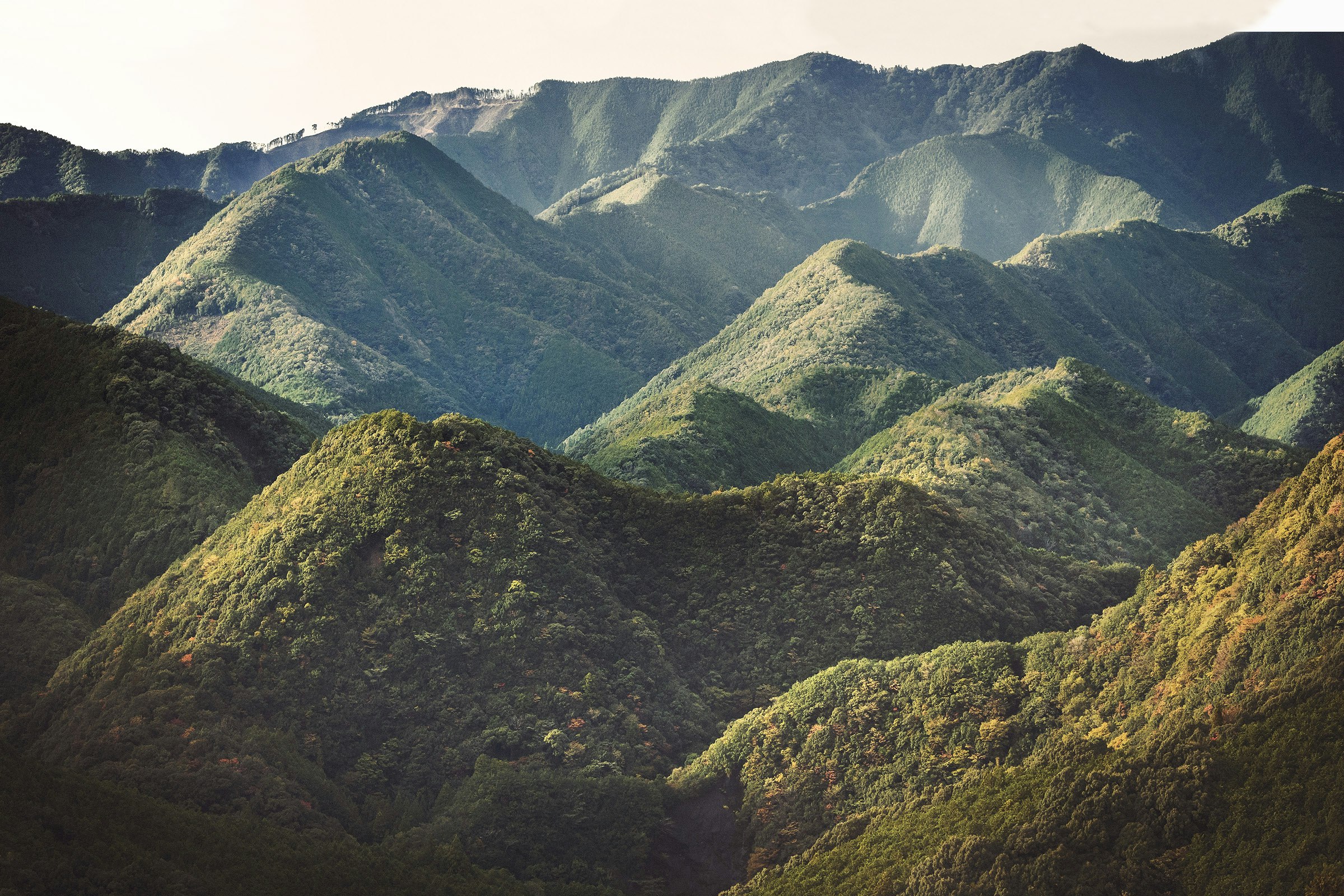
It’s late afternoon by the time the village of Takahara materialises from the clouds, teetering above a valley hatched with cornfields and rice terraces. In the timberframe hallway of Kirinosato Inn, the village’s minshuku, or travellers’ hostel, hikers take off their packs and sip green tea, as innkeeper Jian Shanto welcomes them and shows them along the tatami hallways to their rooms.
‘To be an innkeeper is an honourable position,’ he says, as he lays out a dinner of onigiri riceballs, pickles, foraged vegetables, smoked fish and beef stew, served in handpainted chinaware. ‘To look after pilgrims and share their journeys is a most important task.’ He pours freshly brewed tea from an earthenware pot, greeting his guests as they filter into the dining room in traditional yukata robes and soft-soled slippers. ‘Walking the Kumano Kodō is a journey, just like life,’ he explains after dinner. ‘It has many ups and downs. There are hard days and easier days, but one thing is certain: you will discover much about yourself along the way.’
He pads down the corridor to lay out futons for the night as guests soothe their muscles in the volcanic waters of the inn’s onsen. Outside, mist spools over the valley and stars spot the darkening night sky.
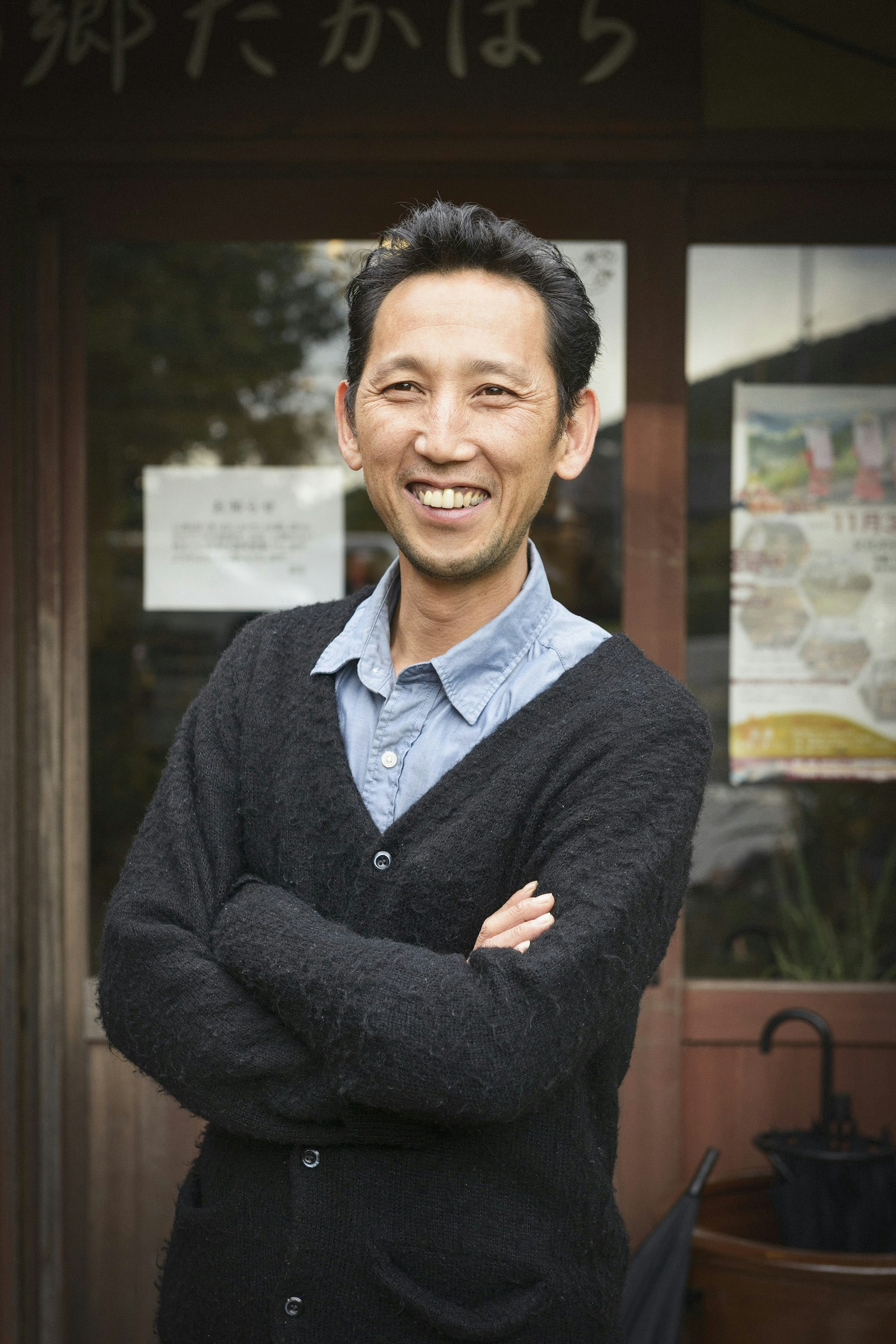
Sanzans and shrine maidens
Like all long journeys, the Kumano Kodō soon settles into a rhythm: up at dawn, followed by a breakfast of riceballs and onsen-boiled eggs, then an early start on the trail. As the sun rises over the hilltops, tired legs recall their pace and the miles begin to slip by. Cobbled paths melt into leaf-littered trails; humped bridges skip over fast-flowing streams. The trail climbs and falls, loops and meanders; it runs over ridges and winds down through valleys, passing groves of bamboo, cedar-lined ravines, lichen-covered walls, ponds shaded by drooping oaks. Mud crabs skitter across the path. Gradually, the ears tune into the woodland soundtrack – boot crunch, river jangle, wind sigh, leaf rattle, birdsong – and the mind turns inward, slowly, as the act of walking approaches that of meditation.
A sense of inner peace is something most seasoned hikers have experienced, but for some Kumano pilgrims, seeking it is a lifetime’s work. The yamabushi, or mountain monks, have tramped the Kii mountains for centuries, testing their bodies to the point of exhaustion in search of spiritual transcendence. They can still be seen, sometimes, stalking the hills in their white togas, pompommed tunics and black caps. Encountering them on the trail is said to be an especially auspicious omen.
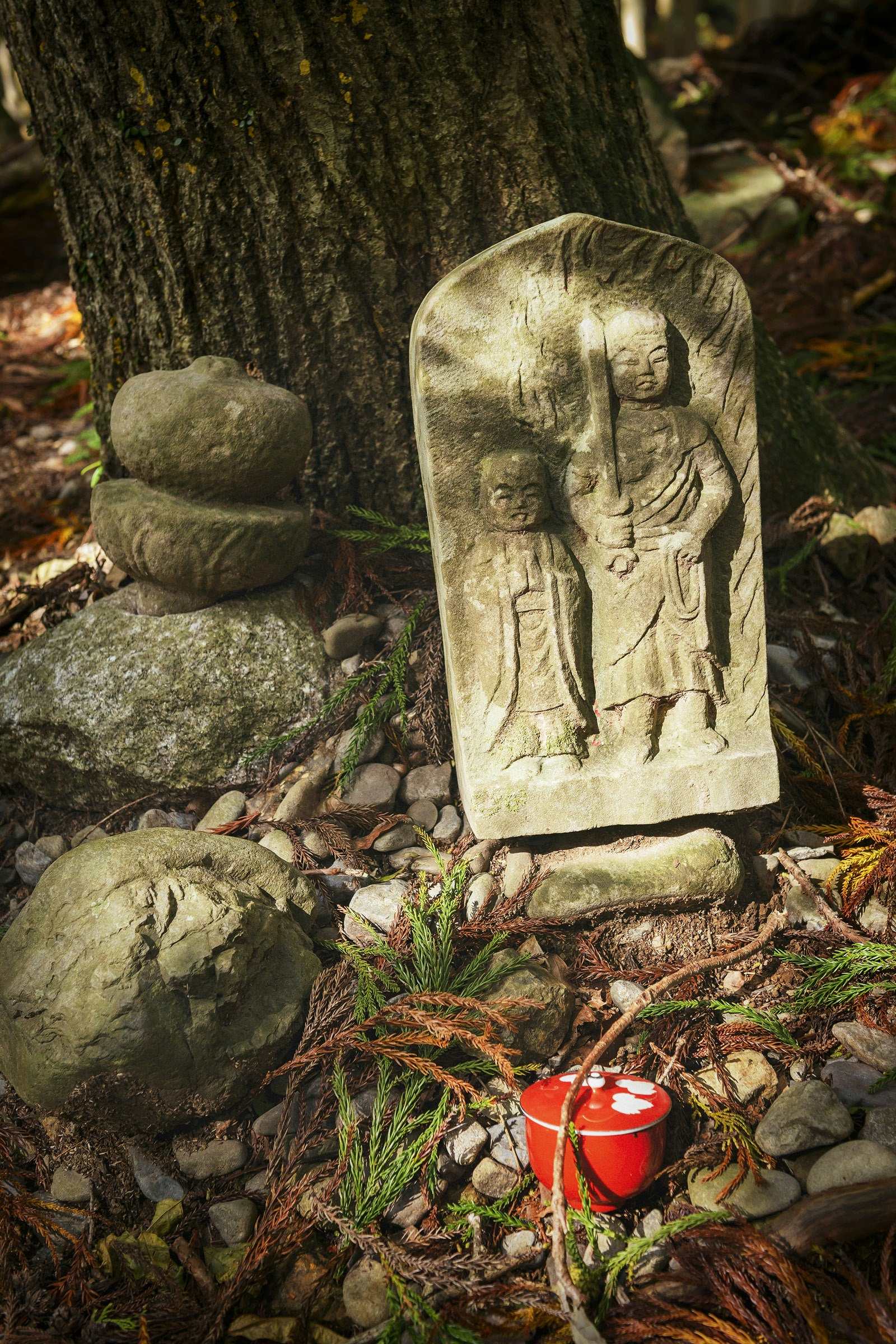
For most Kumano monks, however, life follows a more orderly regime. Masayuki Nakahira is a Shinto priest at Hongū Taisha, the first of the three grand shrines on the Nakahechi trail. He spends his days meditating, chanting, performing blessings for pilgrims and tending to the shrine grounds. He and his seven fellow monks are aided in their duties by female acolytes known as shrine maidens, who perform sacred dances and run the shrine shop, where pilgrims can buy lucky amulets and have their prayers etched onto washi parchment in intricate calligraphic letters.
‘Each of the shrines is inhabited by a different deity,’ Masayuki says, dressed in the white robes and china-blue trousers of a third-level Shinto priest. He greets me with a deep bow outside the shrine’s outer gate, then performs a purifying blessing, chanting a prayer as he waves a staff fringed with fronds of white paper. Then, producing a heavy iron key from beneath his robes, he unlocks the door into the inner sanctuary. Inside, three shrines squat in the shadows. Birds flit and dart under the wooden eaves, and incense smoke swirls from cast-iron cauldrons, filling the cobbled courtyard with the sweet, earthy scent of sandalwood.
‘Here at Hongū, our gods govern matters of the future, so pilgrims come to pray for fortune in their later lives,’ he says, and bows toward one of the shrines as monks gather for morning prayer. A brass gong clangs and the drone of plainchant rumbles out from the inner chamber – deep, rhythmic and resonant – underscored by the snap of prayer-flags fluttering in the morning breeze. With a farewell bow, Masayuki disappears into the shade of the shrine, and I head back down the worn stone steps to rejoin the trail.
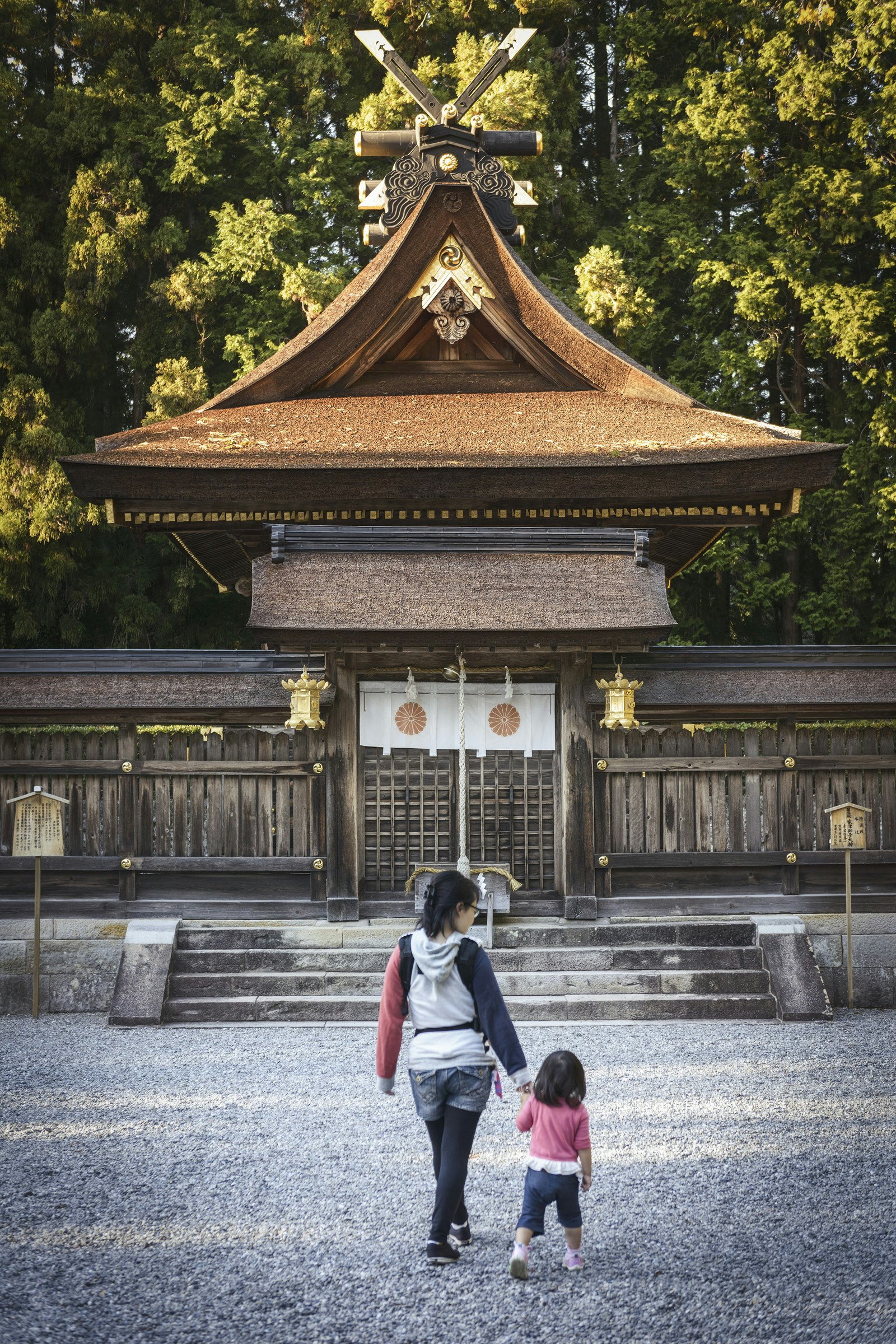
The emperor’s way
The heyday of the Kumano Kodō was between the 8th and 12th centuries, when the emperors of the Heian era discovered a passion for pilgrimage. Accompanied by sprawling caravans of yamabushi, aristocrats, courtesans, samurai, porters and chefs, generations of emperors undertook their own spiritual quests, inspiring ordinary folk to follow in their footsteps. By the late 15th century, so many were embarking that the Kumano pilgrimages became known as ‘the processions of the ants.’ Once the routes would have bustled with teahouses and lantern-lit inns, and pilgrims would have spent their evenings watching sacred dances and sumo-wrestling bouts. But this golden age is long gone – remaining only in waymarkers commemorating vanished villages and long-forgotten homesteads, or wooden plaques recounting legends of threefold moons, warrior monks and serpent spirits.
Today, hours can pass on these paths without one walker seeing another. But there are relics of the old Kumano Kodō that have survived: ancient ōji shrines. Every few miles along the trail, these small shrines were built as sanctuaries for the ‘child deities’ of the Kumano Kodō. There are said to be 99 in all, although no one seems quite sure of the precise number. Flanked by guardian lions and bearded dragons, fuzzy with lichen and ivy, many are older than the paths themselves.
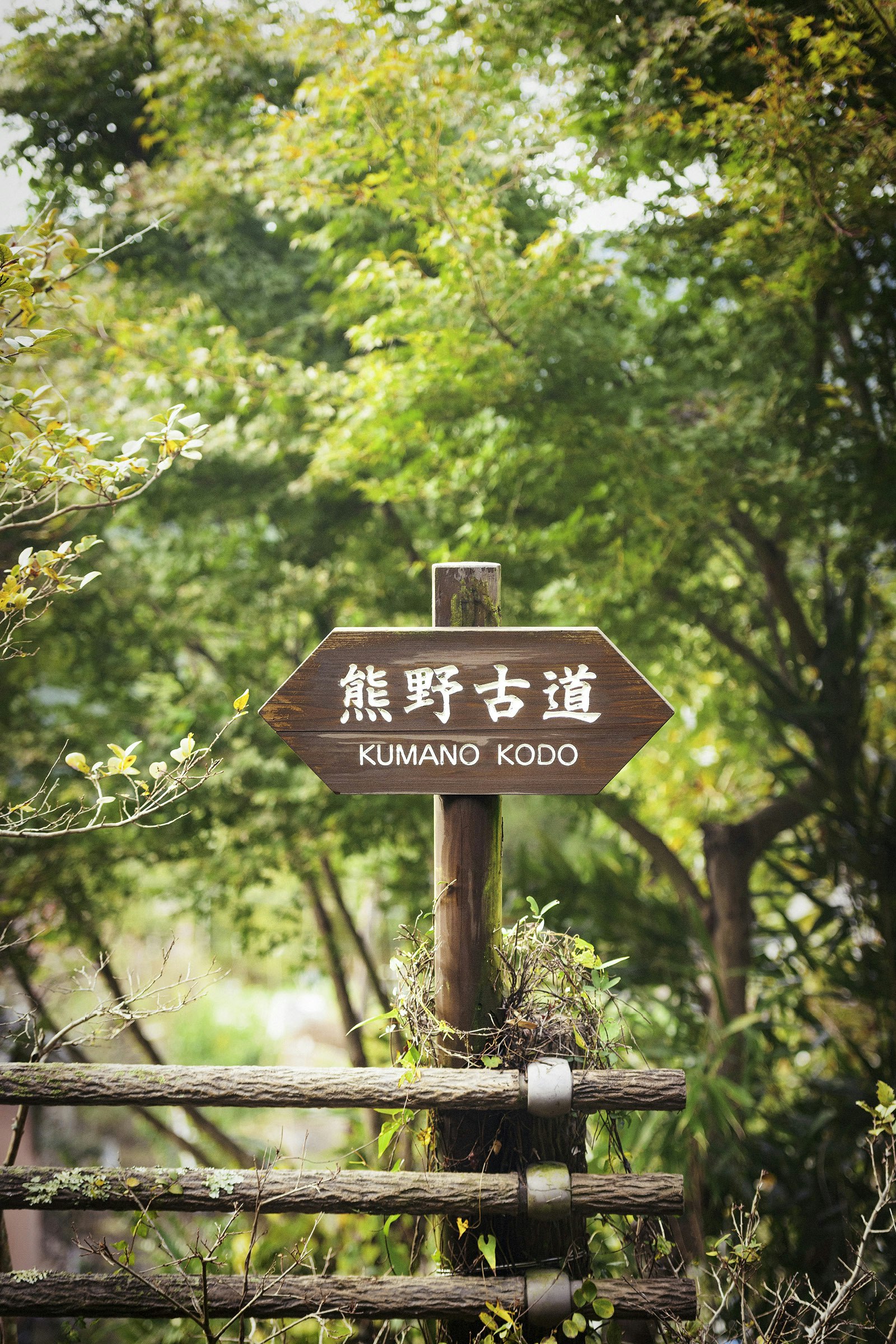
For centuries, pilgrims have stopped at the shrines to offer prayers to the forest gods. The ritual remains unchanged: a washing of the hands, the donation of a coin and a jangle of the shrine bell to summon the spirit, followed by a whispered prayer, two bows, two claps and a final bow. In return, the spirits pledge to watch over pilgrims and ensure no mishaps befall them. These days, modern pilgrims also stop at each one to add another shrine stamp to their trail book – amassing a record of their own journey, a spiritual roadmap in red ink.
It takes a while to get used to the experience of communing with unseen spirits in the middle of a silent, ancient forest – but after a few days on the Kumano Kodō, it becomes second nature. Soon, I find myself looking forward to the next shrine and I begin to understand the reassurance ancient pilgrims must have gained from finding them: the comfort they would have felt in gaining the spirit’s protection and guidance, and the encouragement their invisible presence must have given to trail-sore feet and tired legs as journey’s-end drew ever nearer.
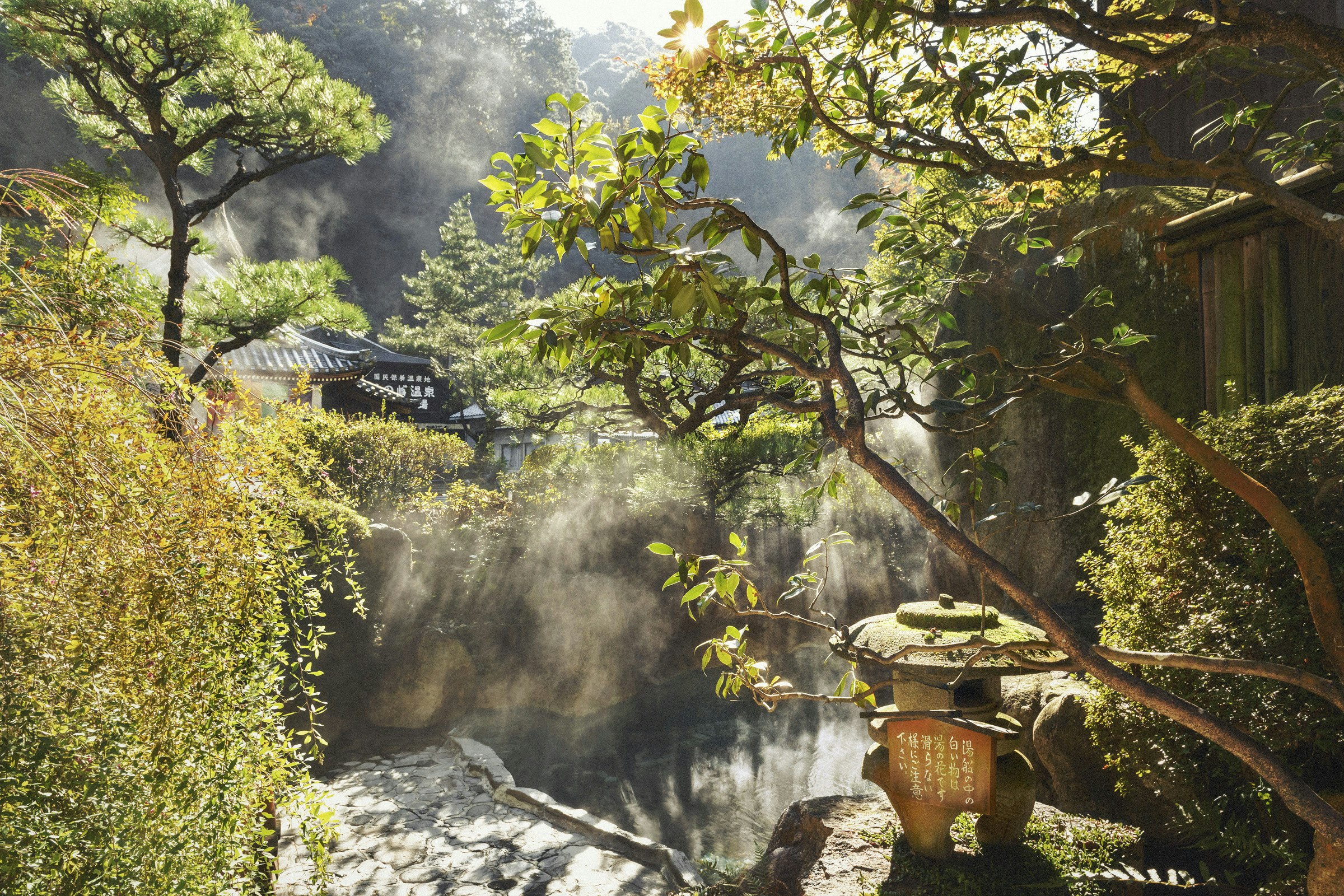
The god rock
At the eastern end of the Nakahechi, pilgrims faced a final test: the formidable pass of Echizen-tōge – at 870m, it’s the highest point on the Imperial Route – approached via the Dōgirizaka, the ‘belly-slitting slope’, so-named as travellers were said to have preferred the prospect of ritual suicide rather than having to endure the punishing climb. For those who overcame it, however, a majestic sight awaited: the second Sanzan at Nachi Taisha, framed against the thundering cascade of Japan’s highest waterfall, and beyond it, the Philippine Sea, glinting blue and still along the eastern horizon.
From here, they would have trekked on down to the coast, through forests of mighty cedars and hallowed nagi trees, before reaching the final grand Sanzan of the Kumano Kodō – Hayatama Taisha, situated at the foot of the holy mountain of Kamikurayama, where the Kumano gods are said first to have descended from heaven, bringing with them the promise of salvation and enlightenment.
A thousand years later, I find myself standing at the foot of the sacred mountain, in front of a bright-red torii gate marking the final half-mile of the Nakahechi. It’s a cool autumn morning as I walk up, eyed by black crows in the treetops and fire-bellied newts basking on the flagstones, into the woods, climbing 538 stone steps hollowed from the hillside. At the top of the staircase, there’s one last offering to make at the shrine of Kamikura-jinja, followed by a last clang of the bell, a final whispered prayer and a farewell bow. For pilgrims of old, this would have marked the transcendent moment of their journey – the point when their old lives ended and their spirits were reborn.
Just as the ancient pilgrims must have done, I step back from the shrine and look up to the holy rock of Gotobiki-iwa, as hawks circle above the mountaintop and the maple boughs are stirred by the wind. I watch, and wait – and wonder how long it will take for the gods to appear.
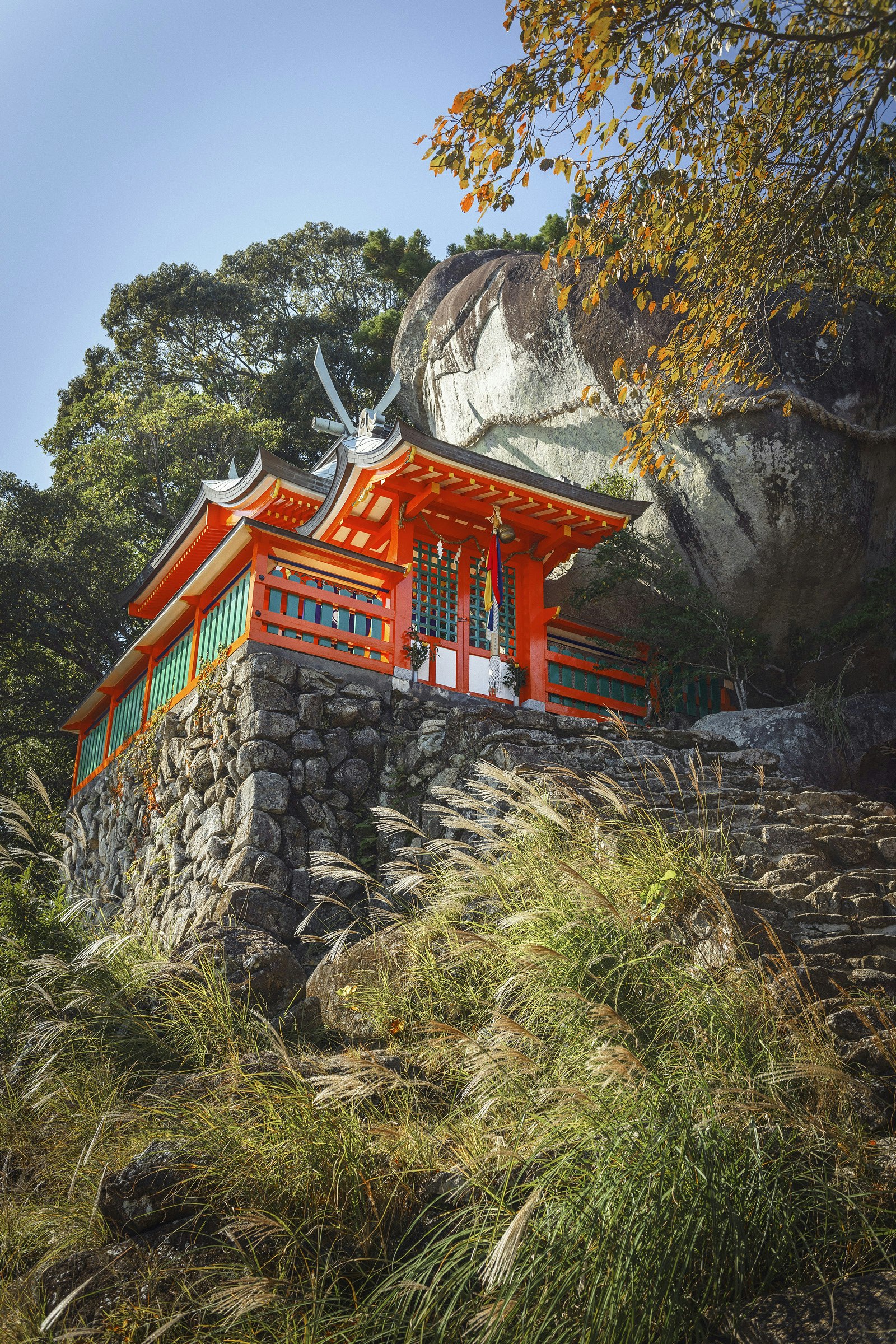
Plan your own hike along the Kumano Kodō
Getting to the Kumano Kodo
Kansai International Airport, 30 miles from Osaka, is the main access to the Kii Peninsula. Osaka and Kyoto are served by the Haruka Express from the airport. Direct trains run from both to Kii-Tanabe, the gateway town to the trails; at the other end, trains run to Osaka from Shingū.
When to do the walk
Early spring and autumn are best. Winter brings heavy snow; trails are busy in summer and lodgings can be scarce. Late summer is typhoon season, when landslides can be common. From 13–15 April, Hongū has a spring festival. Flaming torches light Nachi’s fire festival on 14 July.
Who can help
Walk Japan specialises in hiking packages along the Kumano Kodō. Its itineraries are extremely well organised, including all accommodation, internal transport, evening meals and detailed trail guidebooks. You can choose a fully guided tour, or opt for a self-guided expedition, using Walk Japan’s own trail maps and information booklet, and perhaps just hire a locally based guide for part of the route. Mi-Kumano, based in Tanabe, is a very highly recommended local operator.
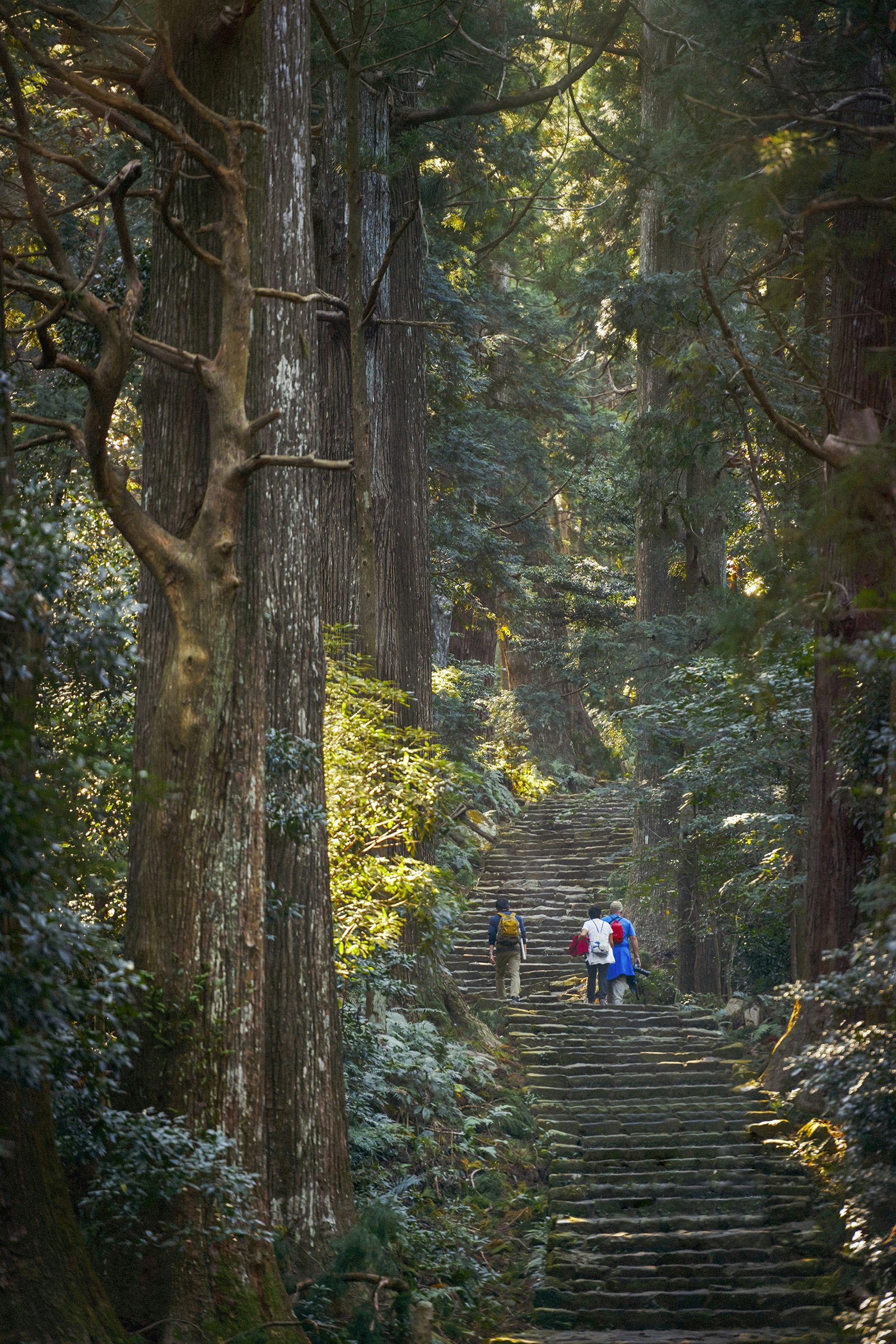
The route
1. Kyoto
Catch the train from Kansai Airport and spend at least a day in the city’s temples and gardens. The best known can be crowded, but Shōren-in and Murin-an are more tranquil. The 1603 fortress Nijō-jō, the Kyoto Handicraft Center and the Kyoto International Manga Museum are worth a visit. Rooms are costly, so a basic city-centre choice such as Hotel MyStays helps keep costs down; rooms are functional here, but it’s convenient and has a decent restaurant.
2. Kii-Tanabe to Takahara
From Kyoto Station, take a train to Kii-Tanabe. Get the latest advice from the Tanabe trail office (00 81 739 26 9025; Tanabe Tourist Information Centre, 1–20 Minato) then take a taxi to the Takijiri-ōji trailhead. It’s a three-hour walk up the mountain to Takahara village and Kirinosato Inn, with western or Japanese-style rooms, all with fine views. There’s an onsen, and the restaurant serves local food such as smoked fish and beef hotpot.
3. Takahara to Tsugizakura
From hilltop Takahara, the main Nakahechi route begins. It leads through wild cedar forest and quiet countryside before emerging at the small town of Chikatsuyu. It continues up and down through the mountains to Nonaka Sansō, a simple minshuku hostel near Tsugizakura village. Rooms are all Japanese-style, with futons, shared corridor bathrooms and a home-cooked meal served by the owner.
4. Tsugizakura to Yunomine
A trek of at least 13 miles over steep hills, through forest and remote valleys. After lunch you emerge at Kumano Hongū Taisha, the first of the three great shrines on the trail. After visiting the main shrine, head for the town’s tori gate, built in 2000, at 33.9 metres the tallest in the world. From Hongū, catch a bus to the village of Yunomine, famous for its onsen. Yunomine-Sō Hotel is a short drive from the town centre. Rooms are plain but spacious – the best have hill views. Dinner is impressive, and the hotel has male and female baths, as well as a smaller, private one.
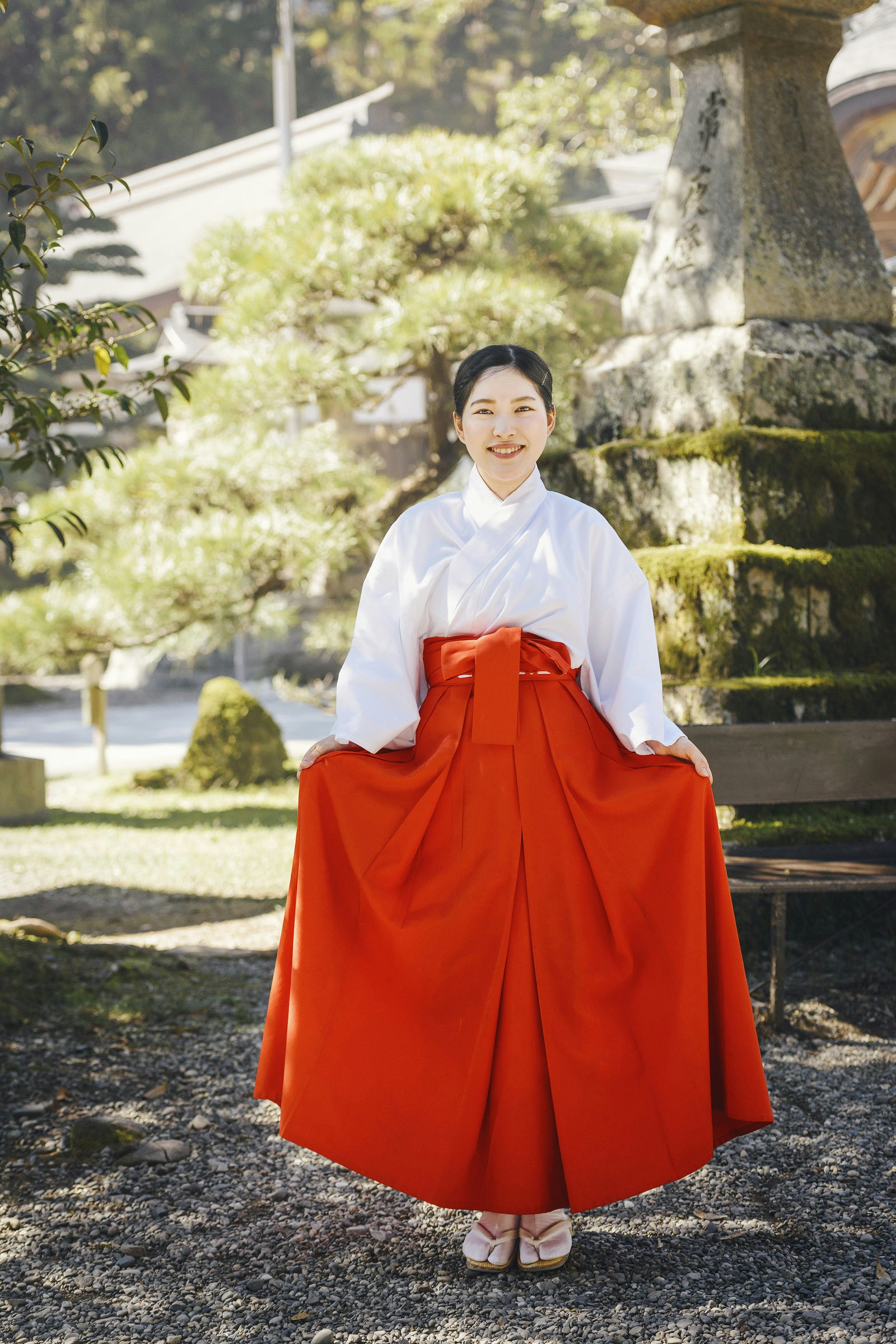
5. Yunomine to Koguchi
Catch a bus from Yunomine to the trailhead at Ukegawa. From here, the path climbs sharply up Hyakken-gura, over the 422m high pass of Sakura-tōge, before descending to the all-but-deserted village of Koguchi, where the school has been converted into walkers’ hostel Koguchi Shizenno-ie. The classrooms are now Japanese-style rooms, and the long corridors, big windows and strip-lit dining room still have an institutional feel. There’s a small lounge for after-dinner socialising, but don’t stay up too late – tomorrow will be the most challenging day.
6. Koguchi to Katsuura
The hardest day: an exhausting slog to the top of Echizen-tōge pass via the infamous ‘belly-slitting slope’. From Koguchi the trail climbs almost straight up until lunchtime through ancient forest to the summit, from which there are wonderful views to the coast. The trail continues down to Nachi Taisha, which is reached by late afternoon. After visiting the shrine, buses go to Katsuura harbour, and regular ferries go to the island hotel of Hotel Nakanoshima, a sprawling, 1970s Bond villain affair, recently revamped. Most rooms have sea views, and the clifftop onsen are impressive.
7. Katsuura to Osaka
Catch an early boat, then a train to Shingū, where the pilgrimage ends with a visit to the final Sanzan, Hayatama Taisha, and a climb to the top of Kamikura-jinja, a half-mile walk from Shingū station. Then catch a train to Osaka (four hours). Spend the rest of the day exploring the city, especially the lively night-time zone around Dōtombori, famous for its street food. Business hotels are plentiful: try the downtown Holiday Inn, a multi-storey affair, handy for Dōtombori, or Namba Oriental, in the centre, five minutes from both Dōtombori and the station.
Oliver Berry travelled to Japan with support from the Japan National Tourism Organization. Lonely Planet contributors do not accept freebies in exchange for positive coverage.
